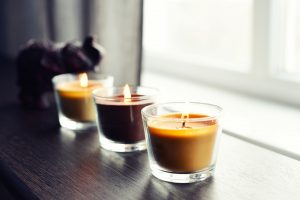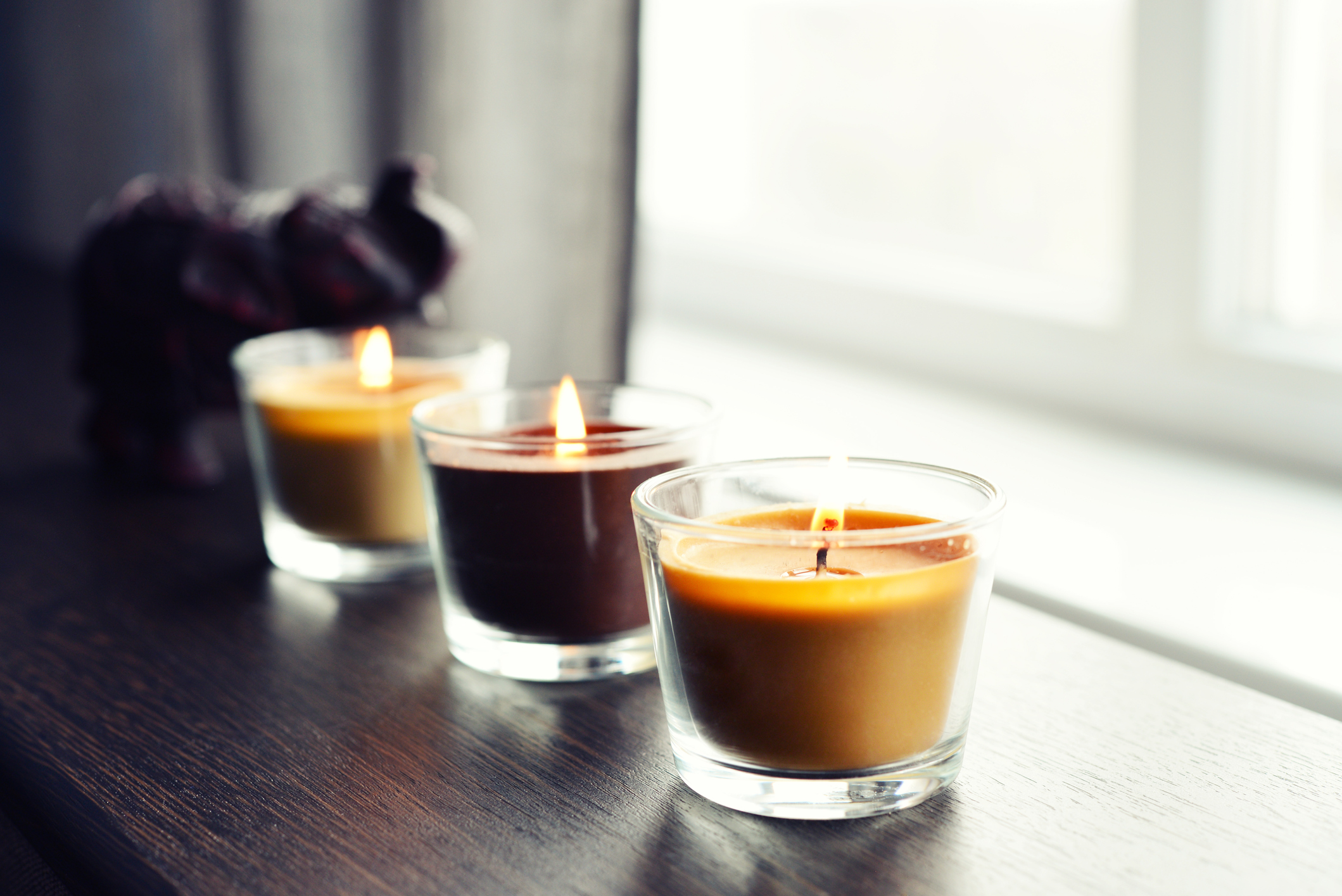
Fortunately, there are candles that are not so harmful to your indoor air quality. What’s more, these candles can be a DIY project so you needn’t spend much money on them.
Here’s what you should know about fall candles:
Paraffin vs. Soy
The most common type of candle is made of paraffin, a petrochemical product that gives off volatile organic compounds (VOCs) and soot. You should avoid these candles whenever possible. Opt for candles made of beeswax or soy, both of which are easier on your breathing. Soy candles are easy and inexpensive to make and can even be scented quite easily.
Making Soy Candles
First, collect all the things you’ll need to make candles: inexpensive glass containers, a slow cooker, soy wax, boiling water, hot pads, tongs, essential oil, virgin coconut oil, wicks, clothespins, and stir sticks.
1. Fill containers with wax, pressing down till full.
2. Set containers in the slow cooker and turn on the high settings.
3. Pour boiling water into the slow cooker halfway up the container sides. Cover the cooker; let wax melt for 45 minutes. Add more wax as needed, then melt for another hour.
4. Remove containers with tongs, setting them on hot pads.
5. Combine coconut oil and 50 drops of essential oil (your choice of scent), pouring and stirring into wax; let sit 10 minutes.
6. Insert a wick into each candle. Hold them in place with a clothespin, then cool them about 30 minutes.
7. Take the clothespins off, then trim wicks to a half-inch.
For more on fall candles and other indoor-air-quality topics, contact Ace Hardware Home Services of Dayton.








